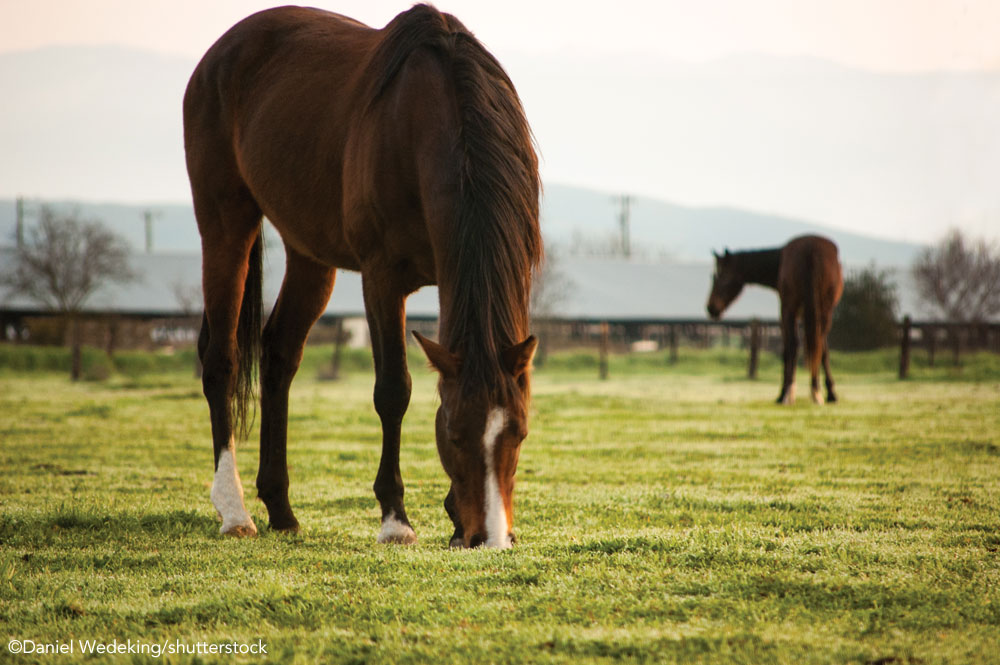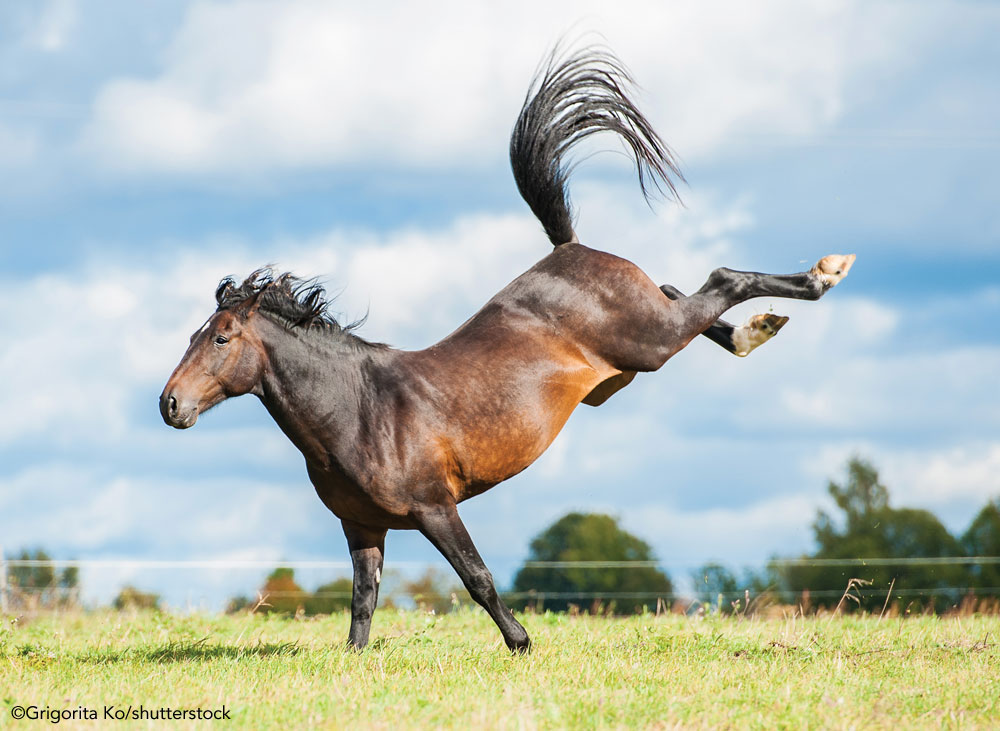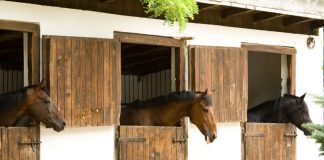- Allowing a horse to live turned out with other horses for all or most of the day is best for physical health and well-being.
- However, there are legitimate concerns about safety risks that come with being turned out in a herd.
- Horse owners and farm managers can implement management techniques that reduce the risks while providing plenty of turnout.
Living at least part of the day in a large turnout area is a natural state for horses, one that helps maintain behavioral calm, especially when pastured with other horses.

How can you achieve the best lifestyle for your horse while keeping him safe and alleviating your fears about turning him out to pasture? Let’s look at the pros and cons.
The Pros of Turnout
Here are just a few of the reasons why turnout is so good for the well-being of a horse.
- Maintenance of muscle tone and coordination;
- Good blood circulation;
- Joint lubrication and cartilage development and maintenance;
- Structural strength of musculoskeletal tissues, like tendons and ligaments;
- Improved bone density, especially in growing foals;
- Hoof stimulation to grow strong hoof wall, frogs and soles;
- Improved overall condition and fitness;
- Fresh air that is beneficial for respiratory health, especially compared to a stall environment;
- Improved intestinal motility and health as a result of exercise and intermittent grazing on pasture grass;
- An opportunity to blow off steam without hurting a rider;
- Time to pal around with other herd members;
- Mental calm from being with a herd, able to move around, exercise, and graze at will.
The Cons of Turnout
Yet, there are legitimate reasons cited by owners as to why turnout scares them:
- The horse might incur injuries such as kicks, nicks, bites, scratches or lacerations;
- There is a potential for tendon or ligament injury, hoof bruising, or even a fracture from roughhousing or galloping in the field;
- The haircoat, mane and tail could be damaged by abrasion or sun;
- Herd competition might limit a horse’s access to sufficient forage or might stimulate fighting over food.
Other Considerations for Turnout
Some interesting information has come from various studies. Over a 24-hour period, pastured horses travel twice the distance of those allowed only paddock turnout at night, averaging about 7 miles of travel, whereas those in stalls and paddocks wander approximately 3 miles.

Not only is time outside stimulating to a horse’s mental state, but also what a horse is able to do when turned out is equally as important. Just putting a horse in a small paddock is not the same as turning him out into a large acreage with or without grass.
Venting off steam related to confinement, training or competition makes for safer and more manageable behaviors. A calm and satisfied horse is more able to perform to his potential.
Improving Safety in the Field
Some practical strategies can help quell horse owner anxiety about turnout. Many of these rely on good common sense:
- Turn horses out in areas with safe fencing and gates that are checked regularly. Use of electric fencing around a pasture perimeter adds another layer of security to keep horses away from a fenceline.
- Put protective caps on the top of T-posts that make up a fenceline.
- In a new field or when introducing turnout, walk the horse along the entire field/pasture perimeter in both directions so he knows the extent of his boundaries, seeing it with both eyes. Show him everything in the pasture to avoid surprises.
- Turn a horse out alone or with just one or two compatible buddies so there isn’t a temptation to fight. Put him with calm and quiet horses that aren’t prone to startle or overly responsive to sudden events, like a car backfire or sudden wind blast. Monitor the initial periods when the horses are together to ensure that they do get along.
- Spread hay out in various locations in the field to minimize food competition and to allow plenty of room between eating spaces.
- Ensure that there are no corners in the enclosure where a horse might get trapped.
- Make sure loafing sheds have more than one entry and exit to avoid entrapment.
- Remove or eliminate access to hazards or obstacles, such as farm equipment, ditches, culverts or low-hanging roofs.
- Fence the horses away from trees and shrubs, particularly if they could be toxic if ingested.
For a horse that has been confined most of the time, there may be a transition period where newfound freedom causes him to act crazy. Monitor the situation and have a little patience. Within days, the horse should settle down and become more relaxed with his new environment.
With regular turnout, your horse will flourish with improvements to overall health and well-being, and you will likely have a more easygoing and better-performing horse to ride.
This article originally appeared in the April 2019 issue of Horse Illustrated magazine. Click here to subscribe!





